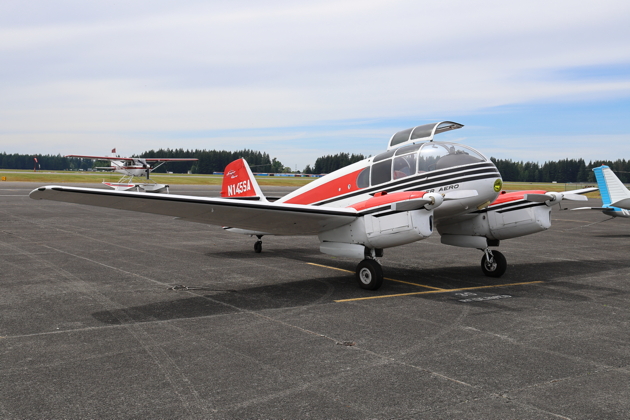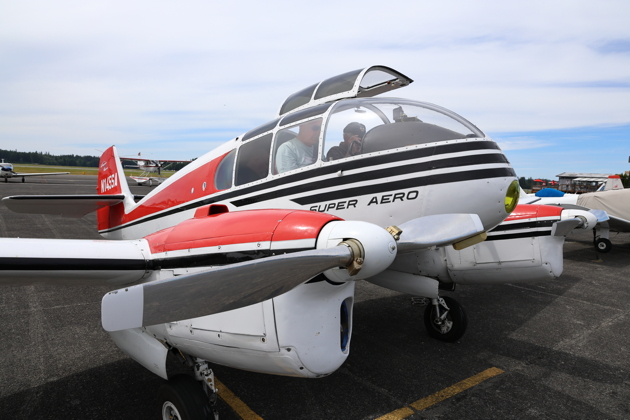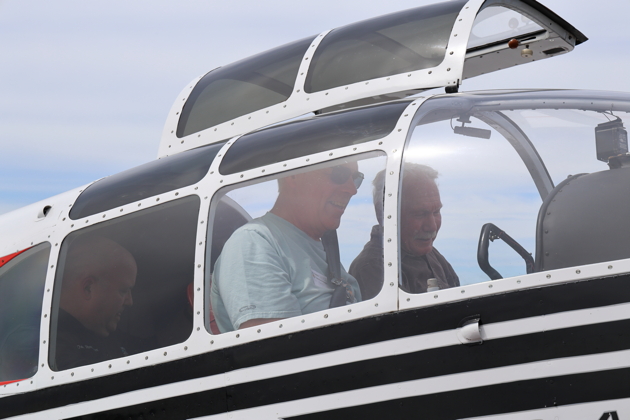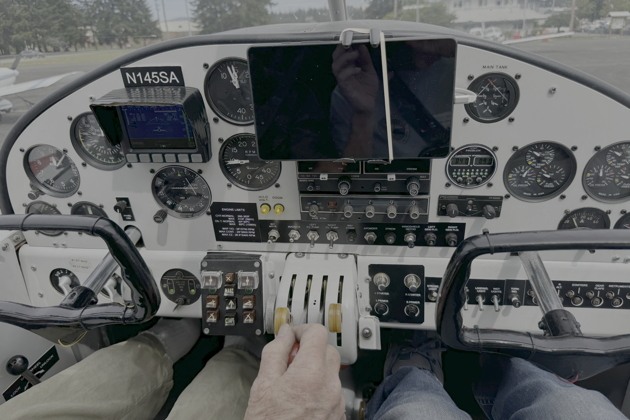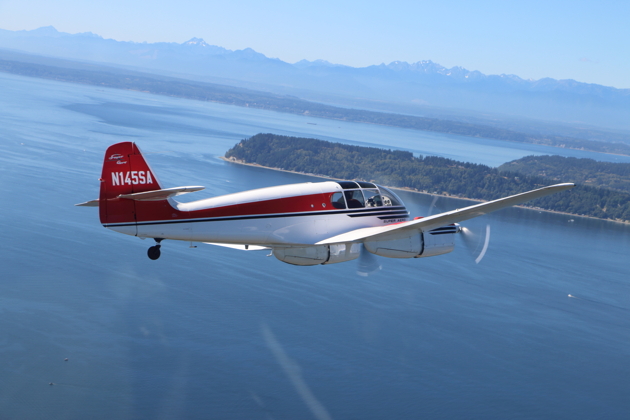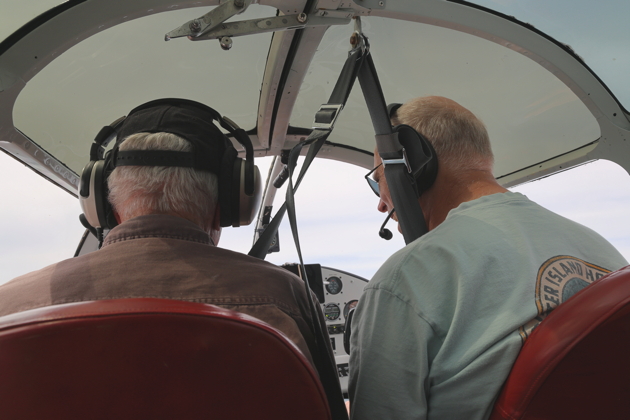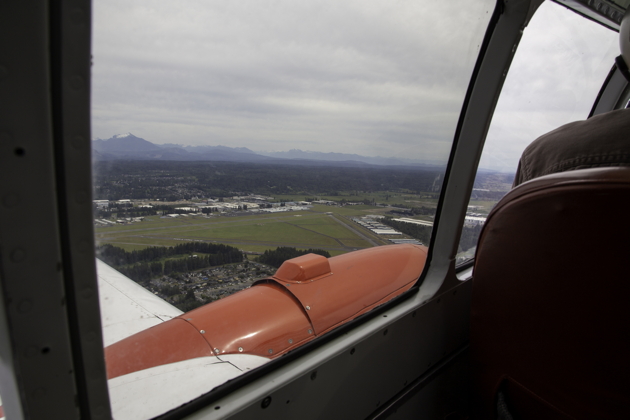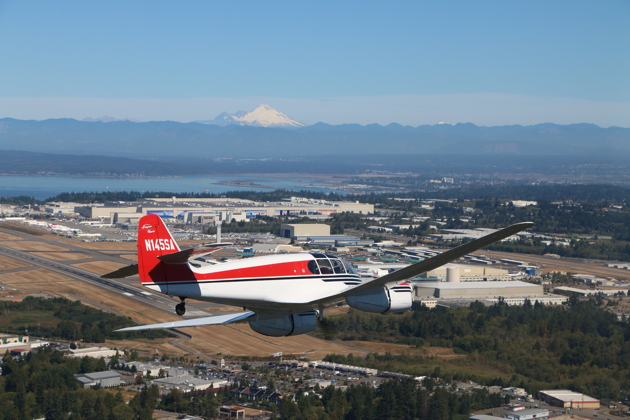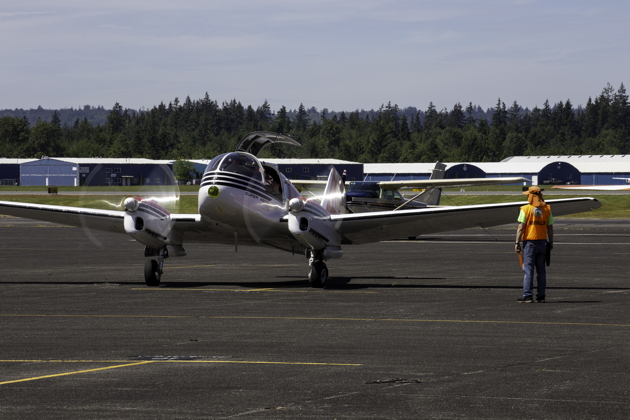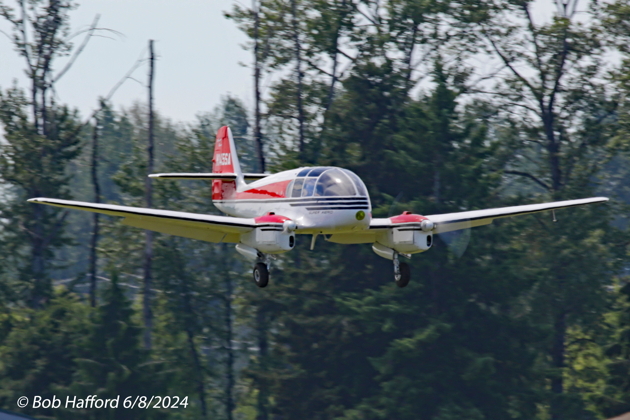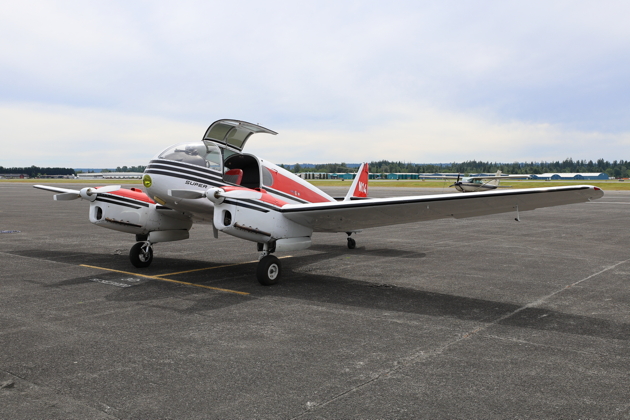FlightLog Archive
∟Aircraft Flown
Flying the Super Aero 45 - Jun 2024
The Super Aero 45 is a twin-engined piston utility aircraft produced in Czechoslovakia after World War II, one of the first civil designs of the post-war Czechoslovakian aircraft industry. Aero Vodochody produced the aircraft in 1947–1951, after which Let Kunovice rolled out Aeros until 1961. The Aero 45 has a teardrop-shaped fuselage, with a rounded, extensively-glazed nose providing excellent visibility. It has a low wing on which the engine nacelles are mounted, and a conventional tail. The main undercarriage is retractable but the tailwheel is fixed. The Aero 45S 'Super Aero' is an improved variant produced by Let in the Kunovice, Czechoslovakia factory. 228 Super Aeros were built between 1954 and 1959.
Bill Shepherd has been flying his Super Aero 45 in the Great Northwest for a number of years, and its unique 'art deco' design always draws a crowd at local airshows. Bill's Super Aero was manufactured in 1955, and is powered by two 140HP Walter M332 fuel-injected in-line air cooled engines, upgraded from the original 105HP Walter Minor 4-III engines. N145SA was owned by another former Delta pilot, but hadn't flown for years when Bill acquired it. Bill said that he would have run out of hotel funds if he tried to fix it remotely, so he took off the wings and trucked it to the Northwest. The Aero sat for a few more years, until Bill sold his YAK-11 to fund the Aero 45 re-build.
I had flown formation with the Super Aero 45 during the 2017 Vintage Aircraft Weekend at Paine Field in a T-6, but hadn't actually flown in the Super Aero 45 previously. As part of the June 2024 Cascade Warbirds Fly Day at Arlington, WA, Bill Shepherd provided rides in his unique aircraft to Cascade Warbirds family members and guests. As the day wound down, Bill noted that he had fuel for one more flight, so I took his gracious offer of a right seat orientation and mini-checkout flight, with our Ops Officer Dan 'FAGIB' Shoemaker joining the experience in the backseat.
While the Aero cockpit is fairly wide at the mid-section, the ample glass does taper at eye-height, and moving into the right seat normally takes a bit of contortioning. Since I was the recent owner of a new titanium right knee, I took my time slowly settling in. Bill gave me a detailed cockpit panel and control summary. While I had a yoke, rudder pedals and access to the central throttle quadrant, there were no brakes on the right side. Bill's Aero has a modern, updated display suite, with some unique controls, notably the 10-button control panel for prop control. I did notice that the glare shield around the Garmin G5 attitude indicator completely blocked the adjacent airspeed gauge from 0-120 MPH, which would make precise speed control a bit of a chore later in-flight.
After an easy startup, Bill taxied and lined me up on runway 34, and said "You've got it". The Aero 45 accelerated smoothly once I finally reached full throttle throw, which felt almost 150 degrees forward from idle. While visibility was excellent, it took a moment to establish the right climb pitch attitude, since the nose slopes forward. Once I found a reference airspeed on the Garmin, we climbed to the northwest and I got a feel for the Aero’s handling characteristics. The Aero has surprisingly light aileron forces for a twin, and pitch control was easier after I leveled off and calibrated my 'level flight' sight picture. Since the throttle quadrant has such a large/eclectic maneuvering range, and a classic ‘art deco’ propeller control panel, Bill walked me through various climb and cruise 'propeller pitch' buttons. I rolled into a few 45-degree turns, needing only light rudder pressure for coordination. Visibility all around was amazing, but the expansive glass definitely started heating up the cockpit with our filtered sun, with the feeble vent system struggling to cool.
After turns and a bit of sightseeing, Bill let me fly two full patterns and landings back at Arlington. It seemed like throttle movements from downwind to final only used the very last bit of the throttle range, but once pitch was correctly established, airspeed control was straightforward. Bill had me lower the gear, then he set the flaps. Flap position is shown on a cockpit indicator, since the flaps themselves are not visible from the cockpit. I surprised myself with decent final glide path control, with Bill coaching me to hold off my flare until the last second, giving me some hopping bounces on landing. Rudder control on touchdown seemed to have no affect initially, then took hold quickly, giving Dan Shoemaker some excitement in the backseat, but he didn't scream too loudly as we throttled up for our touch and go. With minimal coaching, Bill let me fly a second landing to a full-stop, adding a few more bounces to get my landing currency in the Aero 45! Bill took over the rudder pedals and brakes on rollout, with smiles all around after an awesome introduction to this unique aircraft. Thanks for the enjoyable flying time in your classic Super Aero 45, Bill!
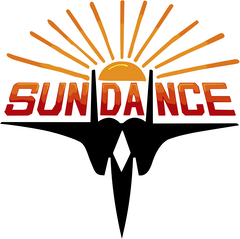 KASPRZYK
KASPRZYK